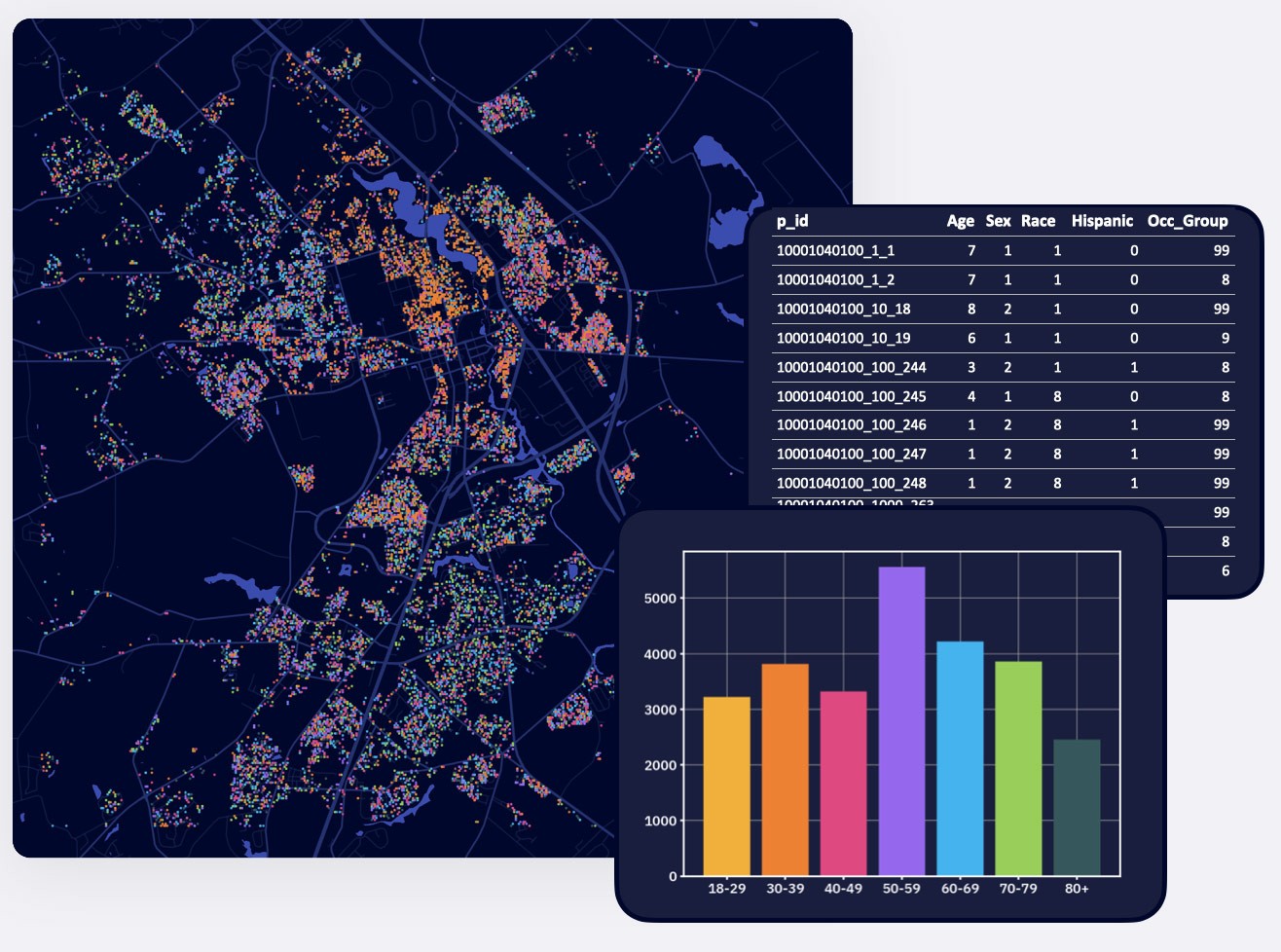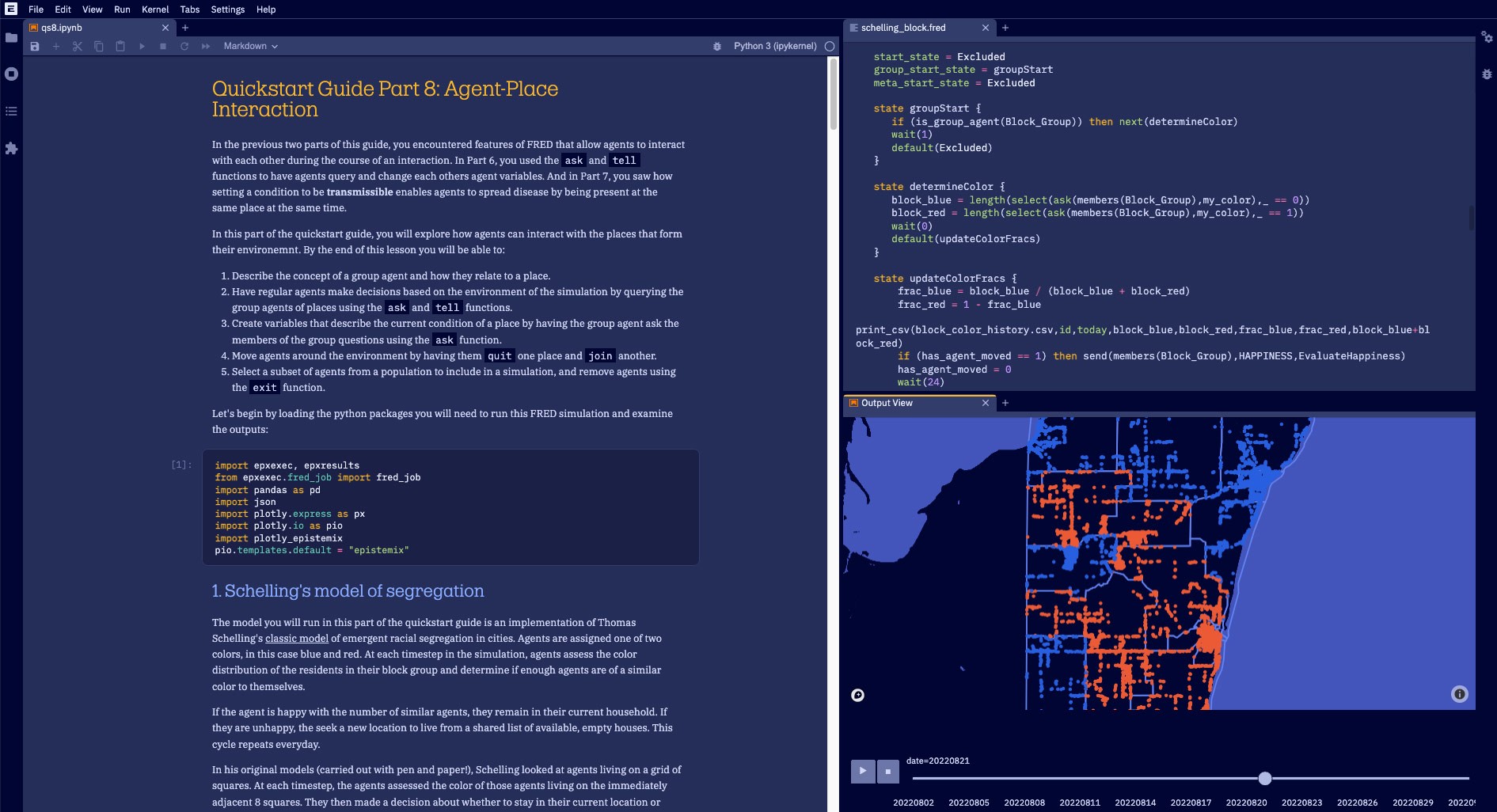How was this content?
SaaS Founder Series: Epistemix on how software simulations can create more empathetic decision-making
Sometimes companies that offer software-as-a-service (SaaS) need help creating scalable infrastructure so they can deliver their product to a larger audience. AWS SaaS Factory invited Epistemix’s chief executive officer (CEO) and co-founder John Cordier to share how the company is using Amazon Web Services (AWS) to scale, and how their software is helping data scientists make more informed, empathetic decisions based on real and synthetic data through machine learning models.
Humble beginnings
In 2000, world-leading epidemiologist Donald S. Burke was heading infectious disease research for the US military when he realized that decision makers didn’t have the tools they needed to understand what the future of an epidemic might look like.
To address this gap in the market, Burke, Cordier, and John Grefenstette founded Epistemix, an agent-based modeling platform paired with a synthetic, statistically accurate population of the United States.
With Epistemix’s software, data scientists can gain insights by running experiments—controlling variables like climate or economic changes—in a statistically accurate virtual world, exploring how large human populations might behave given different circumstances, as shown in Figure 1.

Epistemix started small, incubating the software within the Graduate School of Public Health at the University of Pittsburgh. They also received funding from the National Institutes of Health and the Bill & Melinda Gates Foundation.
But when the three co-founders realized that their platform could help solve social problems beyond the realm of infectious diseases, they spun it out into a company—and Epistemix, in its current form, was born.
Expanding beyond infectious disease response
“When we initially founded the company, our goal was to change the way that public health would be practiced everywhere in the world,” says Cordier. “And public health in the United States is not prioritized. Every single person became a witness to that over the last two and a half years.”
During the COVID-19 pandemic, the Epistemix team used their software to help clients in the global events industry—including CES, IMTS, the Javits Center, and other organizations—make better decisions about how and when to bring people back together.
While they were proud of this work, the Epistemix team soon realized that it was time to scale. The next step would make their platform accessible to the public, so that external data scientists could use it, vastly expanding the tool’s social impact on the world.
“We’ve been able to simulate different product adoption trajectories for different products depending on what marketing strategy they’re going with,” says Cordier. “We’ve been able to simulate segregation in the housing market (Figure 2) in the US. So, what’s next for us is really getting our software in the hands of data scientists in other areas.”

SaaS journey with the help of AWS and SaaS Factory
Epistemix’s first challenge in sharing their technology was creating a scalable infrastructure that external data scientists and other organizations could use. While their platform itself was already quite robust, they struggled to make the software more user-friendly.
After looking at other cloud providers, they partnered with AWS based on its broad range of services. And when they found themselves ready to launch with external users but were still running into technical challenges, they engaged the AWS SaaS Factory for guidance.
“Relying on the AWS SaaS Factory’s expertise, we’ve been able to create a better user onboarding experience. And through that better onboarding experience, we hope to grow the impact that our company can have,” says Cordier.
“AWS SaaS Factory helped us deliver the tool that we’ve built—with the sole intention of improving population health, equity, and policy decision-making that’s going to impact entire groups of people—to data scientists and other organizations.”
Making large-scale, informed decisions with empathy
“Every single person [in the US] is represented,” says Cordier of the Epistemix platform. “And so, I view what we are doing as giving every single person in the country a voice through data.”
Cordier believes that by sharing their platform, which one can use to see how the effects of many different variables play out, scientists will begin to understand how interconnected humans really are.
“When somebody is able to think differently about solving a problem, you can get to some really compelling solutions and a deeper level of understanding rather than what’s coming out of a very linear Excel spreadsheet,” says Cordier.
With this in mind, he believes that Epistemix has the power to change the way people think about solving a problem.
“And if we can have perspectives that are rooted around entire populations, I believe that creates more empathetic leadership, because you’re thinking about the population that your decision is going to impact.”
About AWS SaaS Factory
AWS SaaS Factory can help startups at any stage of their SaaS journey. Whether you’re looking to build new products, migrate existing applications, or optimize SaaS solutions on AWS, we can help. Visit the AWS SaaS Factory Insights Hub to discover more technical and business content and best practices.
Reach out to your account representative to inquire about engagement models and to work with the AWS SaaS Factory team.
Sign up for our AWS Partner communications to stay informed about the latest SaaS on AWS news, resources, and events.

Jessica Koh
Jessica Koh is a Global Business Lead in SaaS Factory at AWS. She works with partners and customers to streamline their current processes and workforce in order to operate more efficiently and become more customer-focused. She has over 20 years of systems integration, operations, and customer success and support experience. Throughout her career, Jessica has held leadership positions where she increased revenue in new markets, working cross functions and leading new initiatives across hardware and software products.
How was this content?